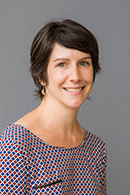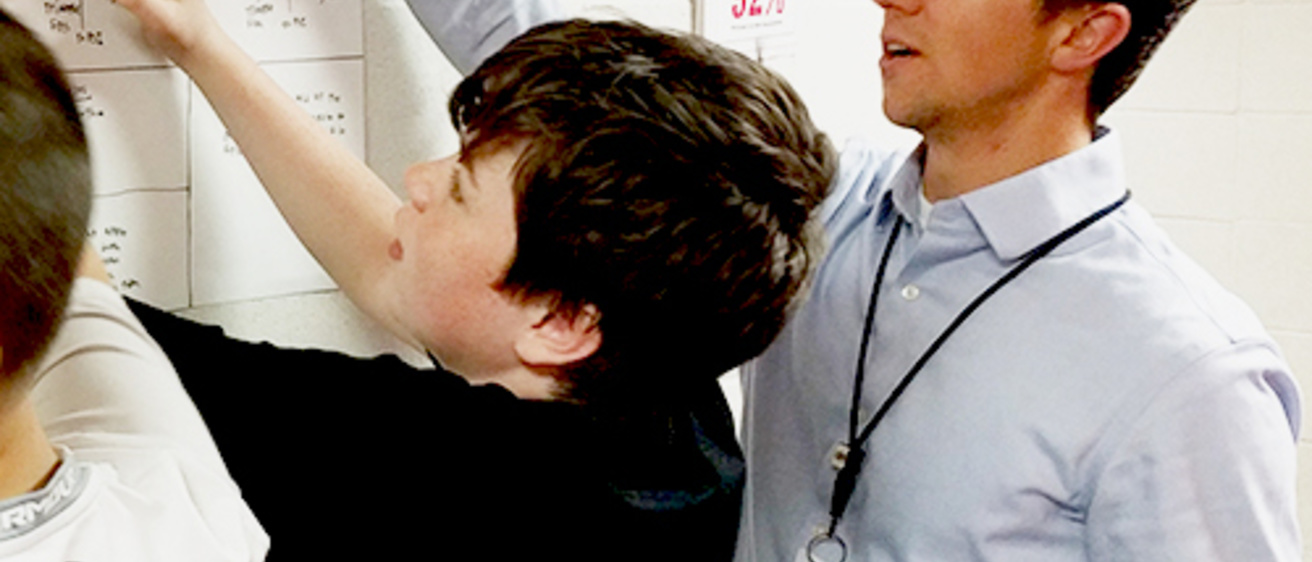By Andy Goodell
The state of Iowa and nation are facing shortages of students who are knowledgeable in STEM fields to fill a variety of important career positions.
These include careers in specialized engineering and skilled programming.
Thanks to a recently earned nearly $2 million-dollar grant from the National Science Foundation, the Belin-Blank Center for Gifted Education and Talent Development in the University of Iowa College of Education will continue to strengthen STEM-positive environments for rural Iowa 6th- to 8th-graders through the existing STEM Excellence and Leadership program.

Lori Ihrig
The program, spearheaded by the Belin-Blank Center for Gifted Education and Talent Development in the University of Iowa College of Education, recently earned $1.9 million in grant funding from the National Science Foundation. With this funding, the Belin-Blank Center is poised to strengthen the impact of the STEM Excellence and Leadership program by examining its strengths and challenges.
The program ran as a pilot program from 2003 to 2009 in 5 rural Iowa school districts thanks to a grant from the federal Funds for the Improvement of Education. The program involves 10 rural school districts across Iowa and around 40 educators. More than 500 students have benefitted from the above-level testing the STEM Excellence and Leadership program offers. More than 200 students have also participated in its extracurricular STEM programming.
STEM Excellence and Leadership programming includes extracurricular programming for students in grades 6-8 in science, mathematics, and integrated STEM studies.
Susan Assouline
Geographic, sociological, technical, and economic barriers present challenges for high-achieving rural students when it comes to reaching higher levels of academic achievement, says Lori Ihrig, supervisor for curriculum and instruction at the Belin-Blank Center. These levels of achievement are closely linked to pursuing advanced STEM careers.
This grant will help those at the Belin-Blank Center look at crucial programming elements in each of the numerous school districts the program serves. The needs addressed by this program in Iowa also exist on a national scale, which means the research done through this latest grant could benefit those interested in STEM education for high-achieving students nationwide.
“The STEM Excellence and Leadership program is positioned to break down these barriers and foster rural students’ developing identities as students with high STEM interest, exceptional potential to succeed, and social-emotional resilience when facing challenges,” says Susan Assouline, director of the Belin-Blank Center. “Now, it’s critical that we have a thorough understanding of the instructional practices and learning environment as they relate to the learner’s increased achievement and aspirations.”
Ihrig knows that teachers make a significant difference in the lives of their students every day. She says that knowing more about program implementation and evidence-based practices will benefit both pre- and in-service teachers.

Duhita Mahatmya
“The National Science Foundation is counting on us to build on our expertise in student programming, professional development, and rural education to offer a template for other professionals involved in after-school programming,” says Ihrig. “We want to understand what threads of commonality exist among districts, including aspects that are unique and effective as well as those that pose special challenges. Talent in our rural communities is too important to neglect.”
The STEM Excellence and Leadership program engages 6th- to 8th-grade students from rural Iowa in extracurricular programming that piques their interest in STEM learning and develops this interest. Having a measured impact is part of what garnered this latest NSF grant for the STEM Excellence and Leadership program, notes Duhita Mahatmya, administrator for research methodology at the Belin-Blank Center.
Rural students are less likely than their urban or suburban counterparts to enroll in 4-year post-secondary institutions. According to the National Center for Education Statistics, rural students attend college at a rate of 29.3 percent compared to the overall rate of 42.3 percent. The leadership team of Assouline, Ihrig, and Mahatmya recognizes that students who develop positive identities around STEM are more likely to stick with STEM education and career pathways. This is where the STEM Excellence and Leadership program shows its value to the communities in which it operates, Assouline says.
“Through this award, there is recognition of the importance of the role of a university-based center for gifted education in supporting informal learning advanced STEM learning in rural settings,” says Assouline.
Schools involved in the STEM Excellence and Leadership program include:
Adel DeSoto Minburn Middle School
Atlantic Middle School
Cardinal Middle School
Davis County Middle School
Eddyville-Blakesburg-Fremont Junior/Senior High School
Ford Dodge Middle School
Graettinger-Terril Middle School
Mount Pleasant Community Middle School
Spencer Middle School
Starmont Middle School
